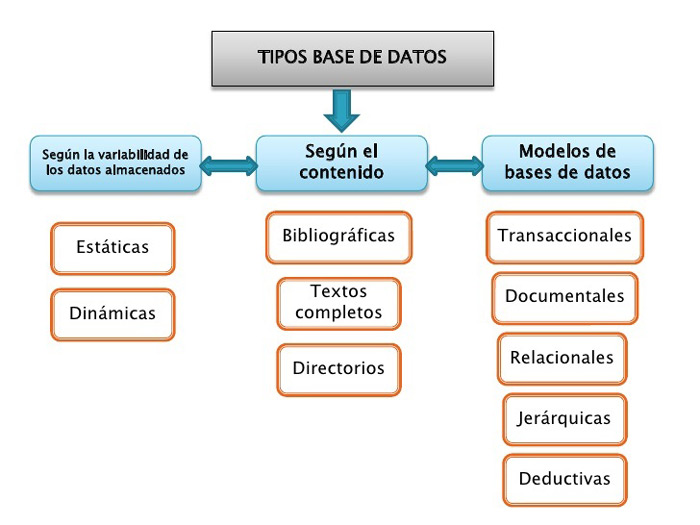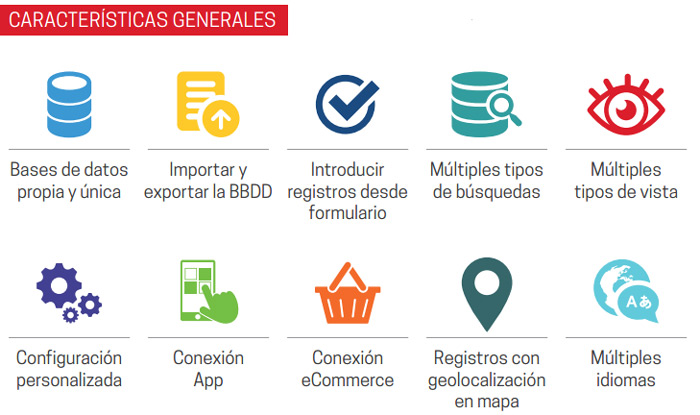
UPDATED ✅ Do you know what a DB really is and how we can keep it up to date? Discover what types and what characteristics they have ⭐ ENTER HERE ⭐ and I’ll explain it to you ✅ STEP BY STEP ✅
Information moves in ever greater sizes and speeds. Gone is the time of reviewing data by hand in long lists of documents in offices, now everything has been digitized so that this whole process is carried out infinitely faster, but also so that the quantities with which they work are much larger. In fact, it is thanks to this need and this change that databases were borna fundamental element in most current companies.
By definition, databases are sets of data that belong to the same context and stored for later use. Returning to the business field, we can think of them when talking about the customers of a business, the products and their prices, the merchandise in stores, the different stores and a long etcetera that is being built all the information that is used in any company.
However, since we are talking about data belonging to different contexts, we also have to talk about different types of databases and therefore different ways of updating them. Because of this, we will explain how to update databases depending on the type to which they belong and the program used for it. Far from having a one-size-fits-all solution, there are many different software designed to deal with each different classwhich in turn are used in also different situations.
Types of databases and how to keep them updated
All this will be explained in this guide. let’s review the main types of databases that exist, what programs and tools are used for their manipulation and, of course, how to update them to always be up to date. These information structures are already a fundamental pillar of any business, therefore, it is necessary to know them by heart.
There are several different types of databases, depending on the language they use, the content they work on and how they operate. Based on this, there are also different programs suitable for its manipulation and, therefore, different methods to always be up to date with respect to updates that may appear over time.

These are the main types, with the most suitable programs or tools and their updates:
XML
XML databases are those that use the homonymous language to build themselves. They are used above all in web content to define and structure the data that is used in the network environment due to the great capacity they possess when handling data related to audio or video formats, increasingly in movement through digital environments.
In this field, the most notable programs for manipulation are Mark Logic or Sedna. To be up to date with the latest of these two programs, sednayou just have to enter the download section of its website and install the newest version.
With the URL that we leave you belowyou can directly access the section “Download” from its portal and get the most recent revision to install it on your PC: https://www.sedna.org/download.html
by columns
This type of database also known as columnar, are the most similar that a user can find when he has relational databases in mind. Its name comes from the distribution of the data, which is structured in columns instead of in the traditional tables.
They constitute a type that is mainly used for make quick queries or to deal with excessively large amounts of data enough to be studied and manipulated by a single team. By dividing the contents into columns, they allow better sectioning of the information to distribute the work among the necessary terminals.
Apache is the leading name in this field. The most widely used program for this type of DB is Apache Cassandra, whose newest version can be found at the following URL through your browser: http://cassandra.apache.org/download/
charts
Graphical databases offer a system that, as its name suggests, Bet more on the visual environment that for the traditional tables or columns, like those mentioned in the previous case. What characterizes them is that what the user sees and manipulates are diagrams that show the relationships between all the data that is handled.
They are mostly used when the aim is to make a fast application or any environment that offers the information as quickly as possiblesince they are also characterized by the speed they reach when manipulating or consulting data. Web portals as online stores they rely heavily on their employment so that users have little or no waiting.
In addition to the solution provided by Microsoft with Horton in this area, we also have Neo4Ja tool whose latest version you can find available and completely free at the following link: https://neo4j.com/download/
documentaries
This type of database, documentaries, are famous for their way of storing information. Data are not structures, but documents that are saved for later manipulation and/or connection. Its use, therefore, predominates in everything that has to do with documentation, be it letters, mail or any other type of variant in this territory.
This very specific branch is used when you have to deal with some document too big how to be treated through a conventional database. Given its specialization, it is the most suitable method to move freely around here.
As for the most notable programs or tools for this type we have again to Apache with your Apache CouchDB and also to MongoDB. The latter can be found at the following web address if you enter through your browser: https://www.mongodb.com/download-center. Although this time we are talking about a cloud service that requires payments.

Computing